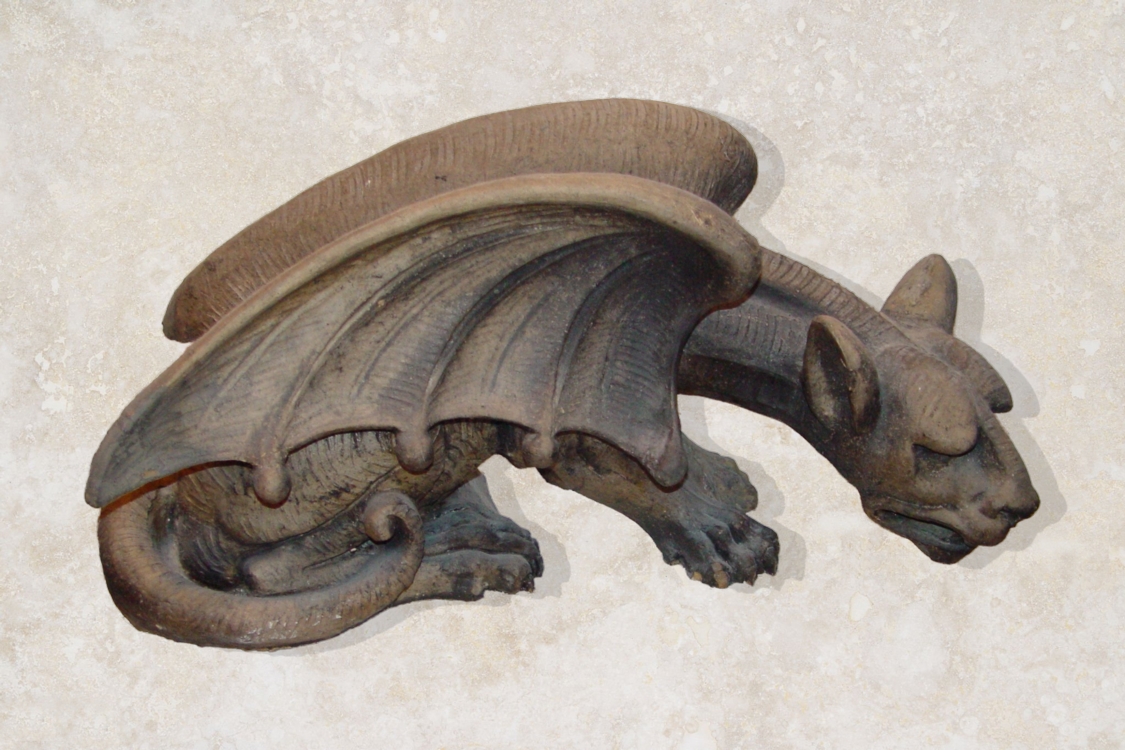
Rare Free-Standing Stone Gargoyle
Maker Unknown
circa 1880
Offers
Shipping $99 Standard Parcel View Options
Questions about this piece
Item Details:
RARE FREE-STANDING STONE GARGOYLE
MAKER UNKNOWN
AMERICAN FOLK ART, circa 1880
CAST IN SOLID CEMENT, PROBABLY PULHAMITE ROCKWORK MORTAR OR PORTLAND CEMENT
Size: 26 x 12 X 12.5 in; 66.0 X 30.5 X 31.8 cm
A masterwork of fantasy design, the present work was salvaged from a Victorian-era building in NYC's Wall Street, the modern secular mecca of commerce, far from the historical religious architectural origins of gargoyles which began in 13th century France.
Gargoyles originated in medieval Europe and were incorporated into the design of churches and cathedrals to serve a practical purpose. As rainwater management systems, they were designed to channel water away from the building's walls and foundations, thereby preventing damage caused by erosion and water infiltration.
In addition to their functional role, gargoyles were also conceived as symbolic and decorative elements. Many of these stone creatures are thought to represent the concept of evil, with their monstrous and fearsome appearance serving to ward off negative forces and remind the faithful of the perils of sin. Their presence on the cathedral's exterior not only enhances its visual appeal but also contributes to the overall Gothic aesthetic, evoking a sense of mystery and otherworldliness. Gargoyles are decorative elements with a practical purpose. Their function is to protect the walls from rainwater runoff which erodes the stone. They designate the end of the gutters to drain away water from the roof. This is why they appear overhanging, leaning into the void, mainly located on the large flying buttresses of a cathedral's choir.
Provenance: Private collection, Pennsylvania from whom the current owner obtained the work
Creator: Maker Unknown
Creation Year: circa 1880
Dimensions: 26 x 12 x 12.5 in
Medium: Cast in Solid Cement
Movement/Style: American Folk Art
Period: Late 19th Century
Condition: Very Good
